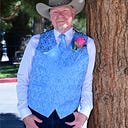Stunning Photographs From The American Civil War
1861–1865 War Photography In Its Infancy
A historian never retires in truth. As I have lived on both sides of the Atlantic, I have been fortunate to have had opportunities to visit and research many places. Historians are encouraged to "Write in pictures. With your words, let the reader see not letters, but images. Be specific about every detail, but don't describe it — make it happen on the page . . ." — A. A. Patawaran. Although the suggestion of writing in pictures is the goal, an actual image (photograph) can also tell the real story. Sometimes more vividly.
The American Civil War was a long time ago, the 1860s. Like almost everyone else, I never considered that the country I lived in and loved dearly would ever encounter such a tragedy again. However, today I'm not so sure. We do live in worrying times and experience such events as having been seen before in American and world history.
The Civil War was so long ago that photography had only recently begun to replace artists and sculptors in depicting war and horror. And yet many of us are not familiar with photography from that era. Many stunning photos tell a sad and horrendous story of a nation that lost about a million dead on each side of the conflict—even brother against brother.
© Stephen G. Arrowsmith 2022
To see more of my work, please check out the following articles. Please feel free to share, give me a clap, and follow me for up-to-date writings.
